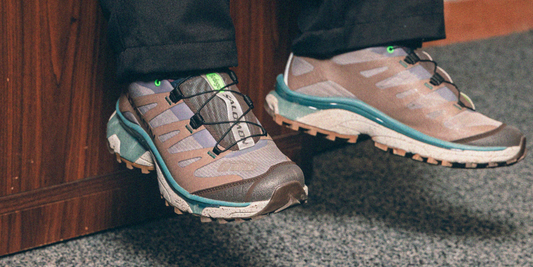By now, you’re probably familiar with the ins and outs of Japanese fashion’s longstanding fascination with and adaptations of mid-20th century, American style. The abridged version, for the uninitiated, is that in postwar Japan, the youthful yet timeless aura exuded by classic, preppy clothing staples possessed a universally malleable nature ideal for a country seeking out a new identity in the reshaping, modern world. We’ve been seeing this aesthetic perpetually reinterpreted by some of the biggest names in Japanese design ever since.
But don’t just take our word for it. We’ve dealt in enough dissertations on this subject to take a bit of a different approach this time around, something of a practical demonstration. We’re going to turn things over to the wonderful world of anime, where even in some of the most fantastical scenarios imaginable, a timeless sense of style can always come in handy. Let’s take a look at how an understated aesthetic has contributed to the characterization of a few notable names.

Light Yagami – Death Note: Kira, mass murderer, global despot, and aspiring god, also known as Light Yagami. A personable, well mannered, handsome top student, who also happened to be the son of one of Japan’s top ranking police officials, Light appeared to the average observer as just exemplary in every way, and he sported the well put together appearance to go along with it. If it weren’t for the genius, investigative machinations of his detective nemesis L, Light might never have been suspected of being Kira at all.

Sorata Arisugawa – X/1999: The manga authors collectively known as Clamp have been responsible for some classic, indispensable titles over the years, one of those being the end of the world battle epic X/1999, which pits two groups of mystically empowered individuals, the Dragons of Heaven and the Dragons of Earth, against each other with the fate of humanity in the balance.
One of these Dragons, the teenaged Sorata Arisugawa would, without his abilities and preordained role to play in the coming battle, be a normal, energetic and cheerful high school student, instead of having been taken from his mother as a young child, and placed in a Buddhist monastery to hone his spiritual powers. His fashion sense, trending on the younger, contemporary end of the classic spectrum, bright jacket, graphic t-shirt, backwards cap, highlights who he is, while also underlining the normal life denied to him.

Mikado Ryuugamine – Duararara: Durarara chronicles the chaotic, often extraordinary goings on in the Tokyo neighborhood of Ikebukuro. The series features a varied and memorable cast of characters, who happen to say a lot about themselves with their clothing choices. The vocational attire of Shizou Heiwajima, Shinra, and Simon mark characters that wouldn’t be able to function outside of the abnormal neighborhood. The school uniform centered outfits of Masaomi and Anri signify their respective desires for an ordinary existence. Celty’s black leather compliments her shadowy, otherworldly nature.
Then, there is Mikado. One of Durarara’s protagonists, his move to Ikebukuro from suburban Saitama Prefecture kicks off the series. Usually seen in a school uniform, or a casual outfit of jeans paired with a green and white track top, Mikado’s outward appearance is very much the everyday, average that he attempted to get away from by moving, founding the Dollars, and placing himself in the middle of so many dangerous happenings.

Tatsumi – Akame Ga Kill: What seems out of place in the following list: a team of elite assassins, superpowered weaponry, a corrupt empire, psychotic antagonists, bloody combat and a v-neck sweater?
A normal guy with not so normal skills who falls in with a revolutionary team of assassins after tragedy scuttles his ambitions to seek his fortune in the capital, Tatsumi definitely boasts one of the higher action to smart-casual ensemble ratios in recent memory.






